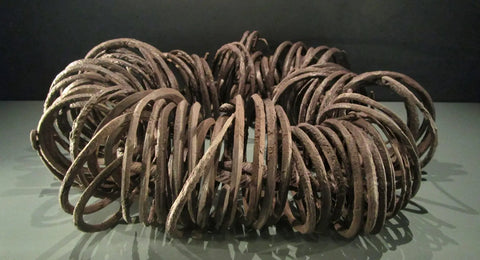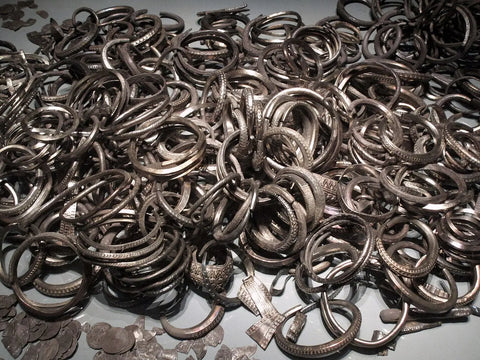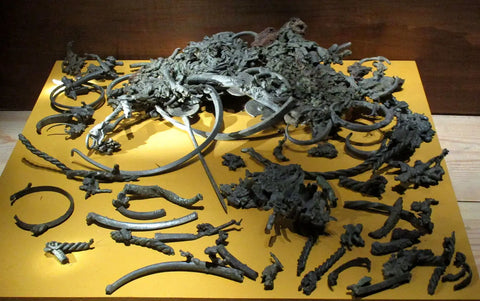Your Cart is Empty
Menu
-
- Shop by Type
- End of Line Sale Items
- New In
- Viking Gifts Under $30
- Hand Forged Axes
- Silver Viking Jewelry
- Stainless Steel Jewelry
- Cremation Jewelry
- Necklaces and Pendants
- Hand Carved Wooden Pendants
- Kings Chains
- Viking Drinking Horns
- Pendant Chains
- Rings
- Bracelets
- Earrings
- Beard Beads and Beard Rings
- Collectables
- Ceramic Mugs
- Street Wear
- Horn Jewelry
- Bronze and Pewter Jewelry
- Shop by Theme
- Viking Axe
- Celtic Jewelry
- Dragon or Serpent
- Viking Raven
- Wolf / Fenrir
- Rune Jewelry
- Odin Jewelry
- Ram / Goat
- Shieldmaidens / Lagertha
- Sword, Spear or Arrow
- Thor's Hammer / Mjolnir
- Tree of Life / Yggdrasil
- Helm of Awe / Aegishjalmur
- Triquetra or Triskelion
- Valknut / Knot of Slain
- Vegvisir / Viking Compass
- Veles / Bear
- Blogs
- Help
-
- Login

The Spillings Hoard - The World's Largest Viking Hoard

On July 16th 1999, the largest haul of Viking silver treasure was accidentally discovered in a field on the Spilling Farm in Northern Gotland, Sweden.
The discovery began when a Swedish TV network was filming a feature on the looting of archaeological sites. The farm owner had already found around 150 coins in the field and after completing the filming, the team decided to continue searching the field with a metal detector.
Within a very short space of time two silver caches had been located. The first was a tangled bundle of silver bracelets weighing around 2Kg (4.5lb) that was believed to have been used for the purposes of currency

The second find included more bracelets along with many silver coins (many of which were Islamic dirhams) and other silver jewlery (this image is from a display of the Spillings Hoard in the Gotland Museum in Sweden after the silver had been cleaned and restored.

A few days after the initial silver finds a third cache of bronze scrap metal was located and later excavated

Throughout 2000-2006 more excavations were carried out and revealed the remains of what was thought to be Viking age chests including a lock mechanism, iron, rivets and pieces of wood. It was believed that most of the cache's were originally housed in these chests.
Viking age finds are not unusual in this part of the world but this find was far larger than anything unearthed previously or since and it was believed that its location close to some of the best and most significant harbours of the time may have meant that the silver was used to pay tax to the Swedish king of Gotland.
Coins from the Spillings hoard at the Gotland museum

Restored Viking bracelets from the Spillings hoard also in the Gotland museum in Sweden

